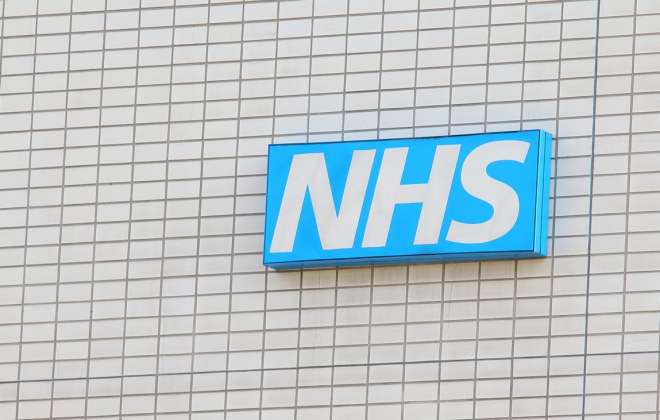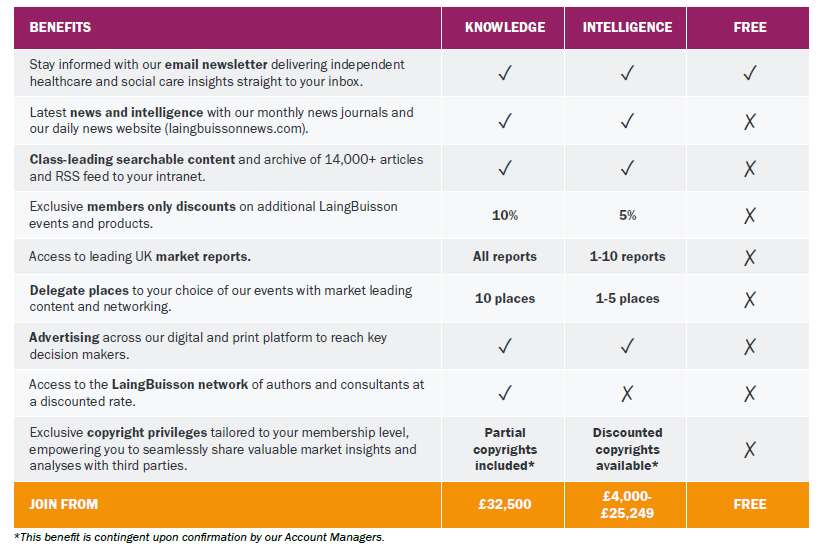New report shows surging demand for private health cover as access to NHS services continues to deteriorate
Highlights from LaingBuisson’s Health Cover UK Market Report 19th edition:
- The overall health cover market in the UK is valued at £6.7 billion as of year-end 2022 – up £385 million on the previous year
- The market has grown considerably faster than historic norms. Annual growthhas been 6.1% between 2020 and 2022, compared to average annual growth of 1.7% between 2008 and 2019
- Private medical cover – which includes private health insurance – accounts for 80% of the total market value at £5.3 billion
- LaingBuisson analysis indicates total number of medical cover subscribers tracks changes in the NHS median waiting list over time. This suggests continued pressure on accessing NHS services may be driving growth in the number of people making use of health insurance
- Demand for health insurance has been driven by organisations putting in place schemes that provide employees with alternatives to NHS-funded care. However, the number of individuals taking on their own health insurance has also begun to rise
- Increased claims volumes in 2022 are yet to feed through to premium increases, but these are expected to rise above historic increases in the near future
- Alongside private health insurance, demand has increased for other forms of health cover. Health cash plans are valued at £461 million, dental capitation programmes at £688 million and dental insurance at £180 million
Demand for private health cover, including Private Medical Insurance (PMI), health cash plans and dental cover, has reached its highest levels since 2008 as the challenge in accessing NHS-funded care continues to push people toward private-funded alternatives for access, diagnosis and treatment, according to research published today by LaingBuisson.
In total, 4.2 million people were subscribed to medical cover schemes – once other people covered under the policies are included, this meant that 7.3 million people were able to make use of private medical cover. This is the highest number since 2008. Given growth in the UK population, penetration remains below 2008 levels (10.8% of the population covered compared to 12.3% in 2008) which speaks to the broader decline in coverage that took place following the 2008 financial crash and only began to recover in 2018.
Covid may have acted as a catalyst for a rapid increase in volumes, but the data suggests that challenges in accessing the NHS waiting list has been driving increased demand for medical cover since 2018. LaingBuisson’s analysis of the NHS waiting list shows a relationship between medical cover subscriber volumes and the median wait time on the NHS. The injection of funding into the NHS in the early 2000s brought down waiting times substantially and was followed by a fall in the total number of people with medical cover. As waiting times remained comparatively low through most of the 2010s, medical cover volumes were steady, before beginning to increase alongside rises in the NHS waiting list from 2018.
Against the backdrop of challenges accessing NHS care, the value of the UK private health cover market reached an estimated £6.65 billion in 2022, helping fund private medical treatment, health cash plan benefits and dental treatments. However, high inflation means that despite growth, the real-terms value of the market actually fell by 2.2%.
Private medical cover
Private Medical Cover (PMI and company-paid self-insurance schemes) represented the largest segment at £5.32 billion – up 6% on 2021, and up 9.6% since the last full year pre-pandemic (2019).
Private medical cover pays for about half of private hospital and specialist treatment carried out in the UK. Two-thirds of private medical cover is funded by employers as an employee benefit. The remaining third is paid by individual PMI policy holders.
Health cash plans
Premium income for health cash plans, which help to pay for ‘low ticket’ health expenses such as visits to dentists and opticians, was estimated at £461m in 2022. This halts successive years of decline in this market segment, which has fallen in value in both nominal and real-terms since 2018.
After a relatively stagnant period since 2009, total cash plan subscriber volumes have begun to grow. However, this has been driven exclusively by demand for company-paid health cash plans. Individual plan volumes have continued to fall and, unlike other segments, did not grow during the pandemic. At the same time, company-paid plans increased by 16.8% in 2021 and 7.7% in 2020 – offsetting any decline in individual plans, and leading to overall demand growth.
Dental capitation plans and insurance schemes
Demand for dental cover products has grown steadily since 2007, and has been aided by long-standing issues in accessing public-pay dentistry, along with rising cost in the NHS co-pay for dental, which have helped to make coverage plans a more appealing option.
Since the pandemic, dental capitation subscriptions have grown at 4.6% (2021) and 7.7% (2022) to cover 2.7 million people. Since 2007, the market value has grown from £454 million to £688 million – at a pace that has allowed it to remain steady in real-terms, despite the recent backdrop of high inflation.
Demand for dental insurance, as measured by contributor numbers and persons covered, has seen recent record growth. The number of subscribers increased 23% in 2021, and 22% in 2022 – leading to more than 1.1 million people covered under dental insurance. The market value of this segment has jumped to £180 million (2022), up from £143 million (2021) and £109 million immediately prior to the pandemic (2019).
Author of this year’s report, Tim Read said:
“Despite a real-terms fall in overall market value, the broader picture for the health cover market is positive. Uplifts in subscriber volumes following the pandemic should translate to overall growth in market value as background inflation declines.
LaingBuisson’s analysis shows a longer, deeper relationship between the length of the NHS waiting list and demand for health insurance. The pandemic may have driven increased demand, but it is misleading to suggest it is the cause of it. Demand began to increase in 2018, as the NHS waiting list began to rise out of control. This suggests that without substantial inroads into making NHS-funded care accessible within acceptable timescales for patients, health cover products will continue to grow in demand.
“There is a long way to go before coverage reaches levels last seen across the UK population since the 2008 financial crash, but it is the first time there has been sustained growth in the sector for more than 15 years.
“Growth is led by company-backed schemes, which may suggest an increased awareness of the impact of employee ill-health on a business – and possibly frustration at the impact that an inaccessible NHS is having on productivity. Investing in a product that enables people to see primary or secondary care specialists when they need to, rather than having a take a day off work hoping for an appointment, is no longer necessarily seen as a perk but as something critical to ongoing business success.”







